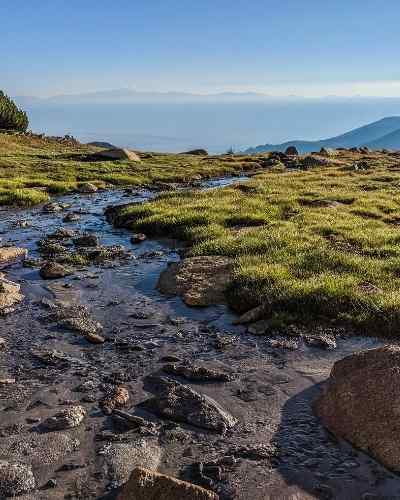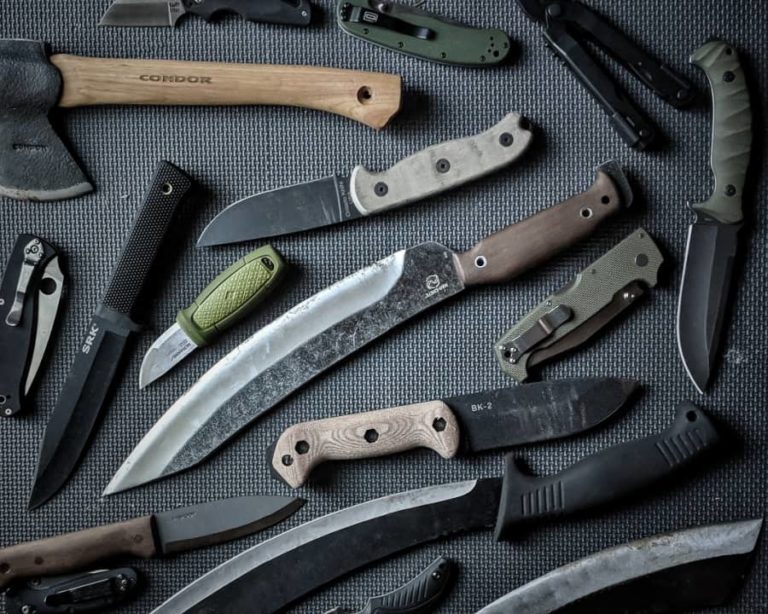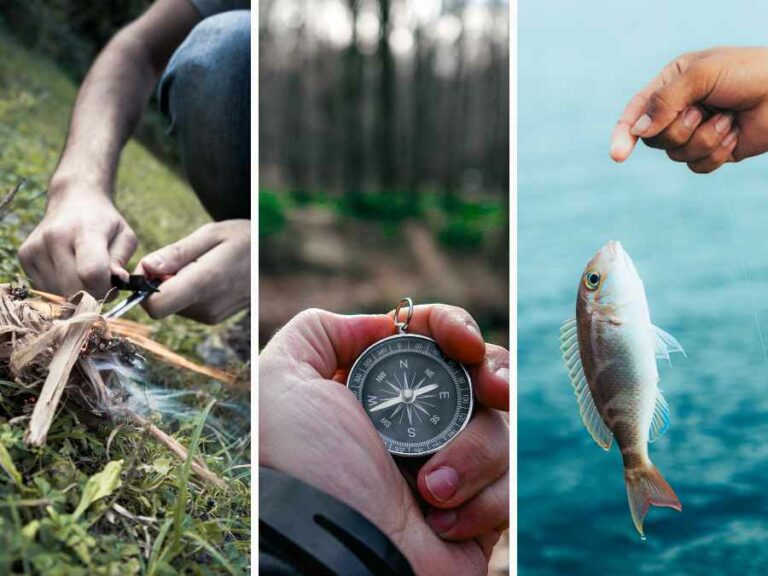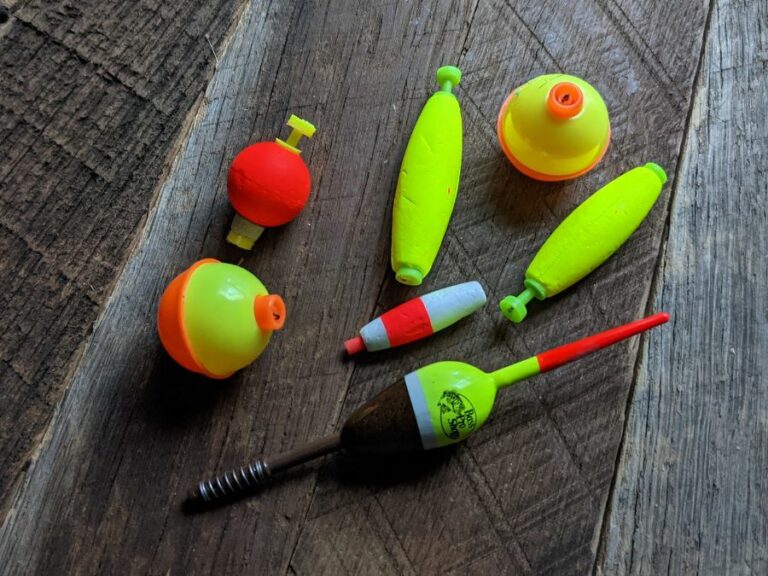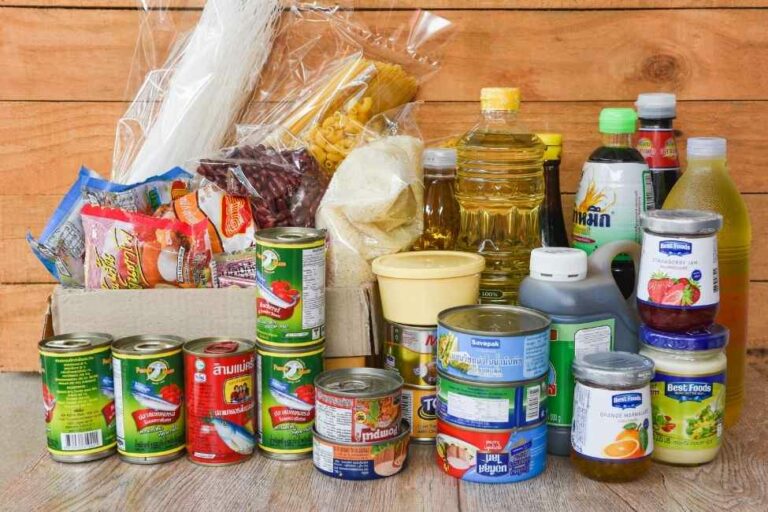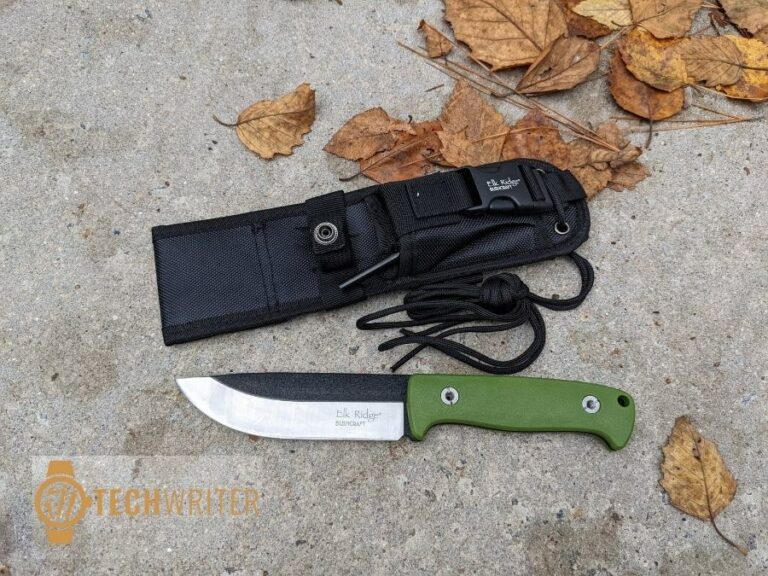How To Find Fishing Bait In The Backcountry
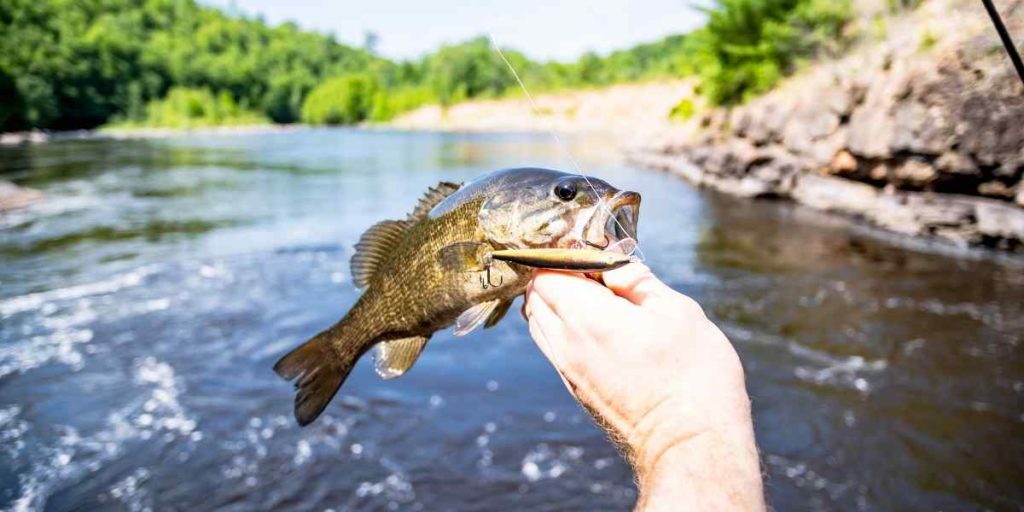
Maybe you’re in a survival situation, and your life depends on catching fish to sustain yourself. Or maybe you’re simply hiking, and come across a fishy-looking pond and want to try your luck.
The point is, knowing how to catch bait in the backcountry is a good skill to have. You never know when the need or desire to do a little fishing may arise, and you may not have any bait handy when it does.
Catching bait in the wild can be challenging at times, but keep one thing in mind: where there are fish, there are things that fish like to eat. Finding bait is never impossible if you know where to look. Hopefully you also have your DIY survival fishing kit handy!
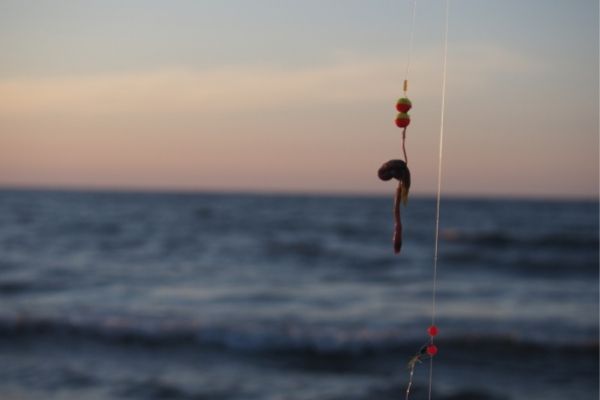
Worms and Grubs
Worms are the first bait most fishermen think of, and they’re usually fairly easy to find. Start by turning over large rocks and logs, and look for anything that wiggles.
But worms aren’t always as easy to get as one might hope. If, for example, you live in a region with heavy clay soil, you might have a hard time turning up any earthworms or nightcrawlers. If you find yourself striking out, you might have to work for your bait.
Keep in mind that worms eat decaying plant matter. One of the best places to find them is underneath a layer of fallen leaves. Gently sweep away the leaves, and carefully dig through the top inch or so of soil.
In dry areas, worms are most likely to be found under rocks that are very close to the bank of a river or stream. They’re also more likely to surface under cover of darkness, so try worm-hunting at night. If you have a headlamp with a red-light setting, use that to avoid spooking them with bright light.
Other grubs, larvae and assorted creepy-crawlies also make excellent bait. Look for insect larvae in the soft wood under the bark of dead and decaying trees and logs.
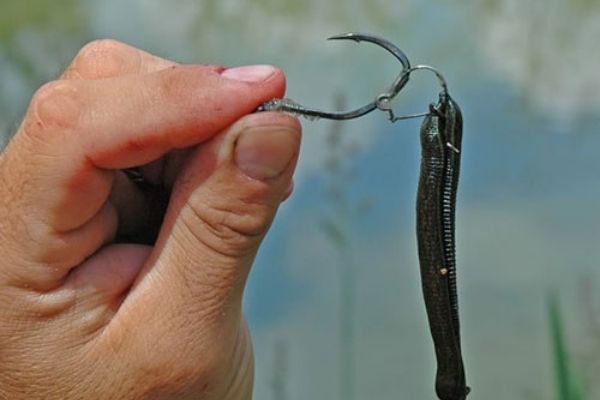
Hellgrammites and Leeches
To find a fish’s favorite meal, look no farther than the bank of your nearest stream or pond. Two great baits reside here: hellgrammites and leeches. These are creatures most folks would usually prefer to avoid, but fishing is a unique circumstance.
Hellgrammites are the larvae of the dobsonfly, and are a favorite food of trout and bass. They look a bit like centipedes, and have some mean pincers you need to watch out for. When you catch one, grab it right behind the head, kind of the same way you would pick up a snake.
Rocky creeks and streams are the best place to find hellgrammites, which spend most of their lives under rocks. Lift up some stones along the streamside; hellgrammites will either cling to the bottom of the rock, or be left in the depression below it.
Leeches, on the other hand, are more common in weedy ponds, marshes and slow-moving streams. They’re difficult to catch by hand, though you can occasionally find them under rocks or fallen logs along the bank. You can wade into the water and let them find you… but I don’t recommend it.
A time-honored method of catching leeches is to use a tin can, coffee can or similar container as a trap. You need some sort of container that can be closed most of the way, allowing leeches to slither in.
Bait the can with some kind of meat (if you’ve already caught a fish, its head and entrails are perfect leech-bait) and leave it in shallow water, tied to a nearby rock or tree with a length of rope or paracord. Leave it overnight, and check in the morning for leeches.

Crickets and Grasshoppers
If there’s a grassy meadow near your fishing spot, chances are it will be full of crickets and grasshoppers during the summer months. These insects are a favorite snack of everything from sunfish to trout.
With a little stealth and determination, you should have no trouble catching a few crickets and grasshoppers by hand. This is, however, a time consuming method, and in a true survival situation, you need to consider the calories you’re burning vs. the calories you’re consuming.
The easiest way to catch grasshoppers is to skim the tops of the grass with a fine mesh net, like a butterfly net. Granted, this isn’t something you’re likely to have handy unless you’ve really planned ahead, but it’s also possible to fashion a makeshift net out of a t-shirt.
Here’s another option… if you have a tent with you in your pack, lay it out on the ground so that the screen mesh is facing up. Walk through the grass around the tent to get crickets and grasshoppers stirred up.
Many of the insects will land on their tent, which makes them easier for you to see and catch. Some may also get their legs briefly caught in the screen mesh, allowing you to grab them before they free themselves.
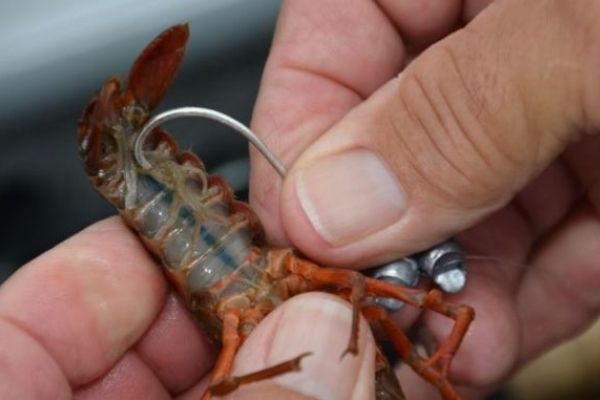
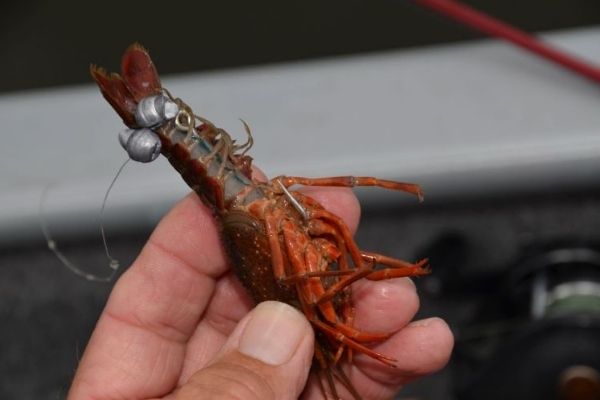
Photo from louisianasportsman.com
Crawfish
Call them what you will—crawfish, crayfish, crawdads—but these little crustaceans are a favorite food of practically any fish that can fit one into their mouths. Plus, if you’re really in a survival situation, crawfish make a tasty meal for us humans too.
Much like grasshoppers, crawfish aren’t exactly hard to find, but catching them can be time-consuming and often frustrating. Crawfish mostly live under rocks in streams, rivers, lakes and ponds, and they often dig burrows beneath larger boulders.
Turn over some rocks, and you’re likely to find some crawfish. But to actually catch them, you need to keep a few things in mind.
First, crawfish scoot away by swimming quickly backwards using their tails. They’ll also try to make their escape downstream if possible. Position yourself downcurrent from each rock you turn over, and work your way up. That way when crawfish try to make their escape, they’ll scoot right toward you.
Move slowly, and make as little disturbance as possible. If you lift a rock gently and wait for the silt to settle before making any further movement, chances are any crawfish underneath will stay in the depression where the rock was, allowing you to grab them once you can see.
If the stalk-and-grab method fails, a net may be more effective. Again, chances are a net isn’t part of your usual assortment of backpacking and/or survival gear, in which case you can make a pretty effective net using a t-shirt and some pieces of wood (check out this video to learn how).
When using a net, the idea is to place it in the stream and hold it upright on the bottom. Lift some rocks upstream of the net—in this case, it’s okay to splash around and raise a ruckus—so that crawfish will flee downstream right into your net. You might also end up with a few hellgrammites, and maybe even a minnow or two.
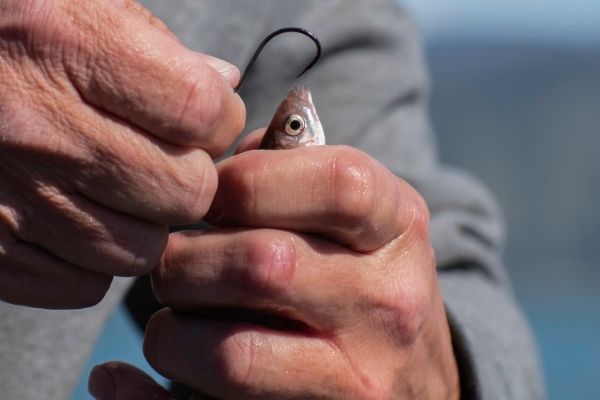
Minnows
Live minnows and small fish are some of the best bait there is, especially if you want to catch larger fish like bass and trout. Of course, minnows are also some of the hardest bait to catch. Grabbing one with your bare hands is just this side of impossible.
So, what are you to do? Chances are, you don’t have a minnow trap handy, so you’re going to have to make one. You can do that using almost any plastic bottle, like a water bottle or soda bottle.
There’s a great tutorial you can watch here that shows the whole process. You essentially cut the drinking end of your bottle off, and re-insert it backwards so that minnows can easily swim in, but have a hard time finding their way out.
Bait your trap with whatever you have handy. Bread or crackers work well, and a few bits of uncooked ramen noodles will do the trick in a pinch. Put a few small stones in the trap to keep it submerged, and tie it to a stable tree or rock on the bank.
The best place to catch minnows in a stream is away from the main current. Place your trap in a relatively still or slow-moving area. In a pond, look for a shallow spot near rocks or tree roots that minnows like to hide in.
Most fish have a tendency to want to swim upstream, so position your trap with the open end facing downstream. This way, minnows are more likely to enter the trap and less likely to find their way out. The current will also carry the scent of your bait downstream.

Alan Dale is an experienced backpacker and adventure sports athlete who pays the bills by writing. Married with a small brood, Alan often has his kids in tow on many of his adventures. You can visit Alan here: https://siralandale.com/

